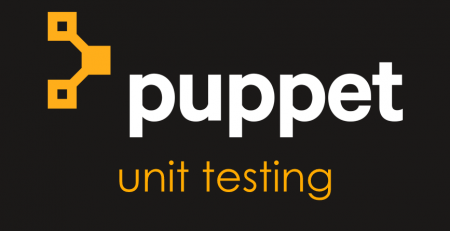What is cloud adoption? The benefits and why you should act now
With the rise of digital transformation, cloud adoption has become a key element for businesses looking to stay competitive in today’s market. But what exactly is cloud adoption, and why should you act now? In this article, we’ll look at the basics of cloud adoption, its benefits and why it’s important to start now. Read on to find out more!
Table of content
What is cloud adoption and how does it works?
What is cloud adoption?
Cloud adoption is the process of using cloud technologies to improve the way you do business. It can involve moving your entire business to the cloud or simply using cloud-based tools to supplement your existing infrastructure.
Why adopt the cloud?
There are many reasons to consider adopting cloud technologies. The most common benefits include improved efficiency, flexibility and scalability. In addition, the pay-as-you-go model of many cloud services can save you money on upfront costs and help you better manage your resources.
How does it work?
There are a few different ways to approach cloud adoption. You can choose to move your entire infrastructure to the cloud, or use a hybrid approach that combines on-premises and cloud-based solutions. You can also choose to use only certain types of clouds, such as private, public or hybrid. The best approach for your business will depend on your specific needs and goals.
Benefits of cloud adoption: cost savings, scalability, flexibility, security
The cloud has become increasingly popular in recent years as more and more businesses adopt cloud-based solutions. We have already written about the benefits of the Cloud, but just to summarize all, we’ll mention cost savings, scalability, flexibility and security.
Benefits

Cost Savings
With a pay-as-you-go model, you only need to pay for the resources you use, which can save your business money. In addition, you can avoid the upfront costs associated with traditional on-premise solutions.

Scalability
Cloud solutions are highly scalable, meaning they can easily be scaled up or down to meet your changing needs. This can be a major advantage over traditional on-premise solutions, which can often be difficult and expensive to scale.

Flexibility
Cloud solutions offer a high degree of flexibility, allowing you to customize them to meet your specific needs. This includes the ability to add or remove features as needed, and to change providers if necessary.

Security
With a well-designed cloud solution, your data will be stored safely off-site and backed up regularly. In addition, you’ll have access to the latest security features and technologies to help protect your data from threats.
Who needs cloud adoption and why?
There’s no single answer to the question of who needs cloud adoption. The truth is that nearly every sector can benefit from making the switch to cloud-based solutions. Here are just a few examples:
Healthcare: The healthcare industry is under constant pressure to improve patient outcomes while reducing costs. Cloud adoption can help by providing access to real-time data and analytics, enabling better decision-making across the organization.
Retail: Retailers should deliver a personalized shopping experience to each and every customer. Cloud adoption can help by providing a scalable platform for retailers to build and deploy custom applications quickly and easily.
Banking and financial services: Banks and other financial institutions are under constant pressure to comply with regulations and keep pace with the latest FinTech innovations. Cloud adoption can help by providing a secure, reliable platform for banks to run their mission-critical applications.
Manufacturing: Manufacturing companies have to increase efficiency and reduce costs. Cloud adoption can help by providing access to advanced analytics and automation capabilities.
The bottom line is that nearly every sector can benefit from cloud adoption. The key is to carefully consider your specific needs and requirements in order to select the right solution for your business. But what about Startups? What benefit do they have from cloud adoption?
In today’s rapidly evolving digital landscape, cloud adoption has become a critical component of business success for startups. Cloud adoption can help startups to scale their businesses quickly and efficiently. The pay-as-you-go model means that startups only need to pay for the resources they use, which can be particularly helpful when cash flow is tight.
There are many benefits of cloud adoption for startups. For example, the first is that it can help reduce costs. Startups often have limited budgets and need to be very careful about how they spend their money. Cloud computing can help them save money on infrastructure and other costs. Another benefit is that it can help startups scale their business quickly and efficiently. They can easily add more users and capacity as needed without having to invest in new hardware or software. Lastly, cloud computing can give startups a competitive edge. It can help them be more agile and responsive to market changes. They can quickly launch new products and services and get them to market faster than their competitors.
How does cloud adoption work? Understanding the technical aspects
Cloud adoption is the process of moving data, applications, or other business components from an on-premises environment to the cloud. The cloud is a network of remote servers that are accessed over the internet and used to store, manage, and process data. Cloud adoption can be done through a number of different methods, including public clouds, private clouds, hybrid clouds, and multiclouds.

(Source: AWS Cloud Adoption Framework)
Public clouds are owned and operated by third-party service providers. They offer pay-as-you-go models that allow businesses to only pay for the resources they use. Private clouds are owned and operated by a single organization. They offer more control and security than public clouds but can be more expensive. Hybrid clouds combine both public and private cloud resources. Multiclouds utilize two or more different cloud platforms from different providers.
When it comes to the technical aspects of cloud adoption, there are a few key steps organizations must take in order to move their data and applications to the cloud. The first step is to identify which resources need to be moved and how they will interact with existing systems. Next, a migration plan needs to be created in order to ensure that all components are successfully moved over. Finally, organizations need to configure security settings and access control measures on their new cloud environment in order to properly protect their data.
Conclusion
By understanding what cloud adoption is and its benefits, businesses can unlock the potential of this technology and gain a competitive edge over their rivals. Investing in cloud solutions today will not only help reduce costs but also increase efficiency and productivity.
Cloud adoption can also help improve the customer experience. Companies can use cloud-based solutions to better serve their customers, analyze customer data and anticipate customer needs. This helps create a smooth and seamless customer journey while allowing businesses to be more agile and flexible when responding to changes in the market or customer demands. Additionally, cloud computing allows companies to scale quickly as their business grows, enabling them to meet increased demand without sacrificing quality or speed of delivery.
Finally, cloud adoption can help prepare businesses for future challenges. With its scalability and agility capabilities, companies can easily adjust their operations to ensure they are prepared for whatever the future holds. Cloud technology has become an essential part of any successful business strategy.
If you need additional help on this, or if you are interested in our cloud services, feel free to contact us. We’ll gladly help you out!












